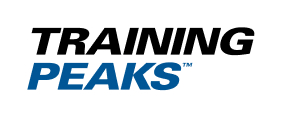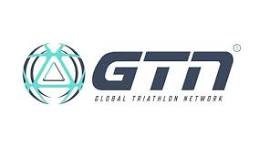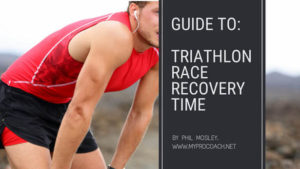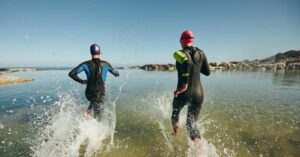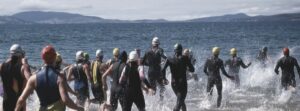The best swim, bike and run pacing strategy for an IRONMAN 140.6 triathlon
An IRONMAN 140.6 involves a 2.4 mile swim, 112 mile cycle and 26.2 mile run. It will typically take you between eight and 17-hours to complete. Over such a long distance, your pacing strategy can make or break your race. This guide will show you how to get it right.
If you’re training for an IRONMAN 70.3, read this guide instead.
To realise your full potential during an IRONMAN 140.6 event, you need to switch off your competitive race-head and focus on preserving energy. No amount of “pushing harder” is going to make you faster. It’s more about economy of effort.
Imagine you’re driving 140.6 miles in your car, with a quarter tank of fuel left. You’re in a rush, but you’re also worried you might run out of fuel. The quickest way to get from A to B is to drive at the most economical speed. You want to reach your destination as quickly as possible, but without draining your precious fuel supply along the way. The same principle applies during an IRONMAN too.
If you pace yourself right, you’ll feel stronger and more mentally positive throughout the day. The first half of the event will feel relatively easy and you’ll probably wonder if you’re taking it too easy. During the second half of the race, you’ll start over-taking the people who started too hard. When you climb off the bike, you’ll still have some spring in your step for the marathon run.
You’ll even find it easier to digest your nutrition, because your body will be in a better state to process it. So you’ll have more energy as a result.
Below, we outline the best ways to pace yourself during an IRONMAN triathlon, broken down into the swim, bike and run sections.
IRONMAN Swim Pace
Think of the swim as being a warm-up for the main event, rather than a race itself. Avoid the temptation to set yourself a target time for the swim. There are too many variables on race day to get this right. If you end up doing a swim that’s slower than your goal time it can lead to low morale and the temptation to catch up during the bike section.
Your IRONMAN swim should be done at a steady pace. There are several ways to pace yourself, including heart rate, pace and Rate of Perceived Exertion (RPE). However, from a practical point of view, using RPE (feel) works well – it saves you trying to look at your watch.
Rate of Perceived Exertion For IRONMAN Swim
- Feels steady
- A High Z2 intensity that feels like 4 out of 10 (where 10 is your hardest)
Heart Rate
- Percentage of your Maximal Heart Rate: 60 to 70%
- Beats Below Maximum Heart Rate: 30 to 50 beats
Pace
- Take your fastest 100-meter or yard training pace and add 10 secs per 100 meters or yards
- If you’re racing in a wet suit, make sure you base your pacing strategy on your recent wet-suit training times (and vice versa)
Check our Triathlon Race Pace Calculator to help guide your swim pacing strategy.
Elite Age Group Triathletes
If you’re aiming for a sub-10-hour IRONMAN (men) or sub-11-hour (women) it’s a good idea to go a little harder in the first 300 to 400 meters of the swim. This can help you get clear of the crowds and find similar or slightly faster swimmers to draft behind. You’ll save up to 10% of your energy for the 3.8km by swimming directly behind other swimmers. Either way, after the first few hundred meters, settle down to your target zone and preserve some energy for the long day ahead.
IRONMAN Bike Pace
It’s vital that you pace yourself sensibly during the bike section. Once your legs get too sore from riding hard you have almost no chance of running well afterwards. There is no going back from this point – the run section will feel like purgatory. Don’t focus on being a hero by posting a super-fast bike split. There are no medals for a great bike-split followed by a disastrous run-split.
Riding at the right intensity takes discipline and courage, especially when other people are overtaking you, but it really works. At around the 80-mile point you’ll notice people starting to drop off while you continue to ride strongly, overtaking people as you go. You’ll also find that pacing yourself sensibly helps you to digest your energy drinks and snacks far easier, which helps you maintain your energy levels going into the run.
Remember to base your IRONMAN race pacing strategy on recent data. You should do a Functional Threshold Power Test (which also incorporates a Heart Rate Threshold test). Don’t be over-optimistic or guess your fitness. Measure it.
Power Meter, Heart Rate or Feel?
Use a power meter (if you have one) to pace yourself on the bike, with heart rate and RPE (feel) as backup measures. If you don’t have a power meter, just use heart rate and RPE instead.
Aim to ride at a steady power output, rather than in bursts. Have plenty of easy gears, so that you can maintain your normal cadence and power output up the hills, without busting your legs.
Power Output
IRONMAN target > Suggested target % FTP
- 8 to 9 hours > 78 to 80%
- 9 to 10 hours > 76 to 78%
- 10 to 11 hours > 74 to 76%
- 11 to 12 hours > 72 to 74%
- 12 to 13 hours > 70 to 72%
- 13 to 14 hours > 68 to 70%
- 14 to 15 hours > 66 to 68%
- 15 to 16 hours > 64 to 66%
Threshold Heart Rate (THR)
IRONMAN target > Suggested target % Bike THR
- 8 to 9 hours > 88 to 90%
- 9 to 10 hours > 86 to 88%
- 10 to 11 hours > 84 to 85%
- 11 to 12 hours > 81 to 83%
- 12 to 13 hours > 78 to 80%
- 13 to 14 hours > 76 to 77%
- 14 to 15 hours > 73 to 76%
- 15 to 16 hours > 69 to 72%
Rate of Perceived Exertion (where 10 is the hardest)
IRONMAN target > Suggested target RPE (feel) Zone
- 8 to 11 hours > 5 to 6 out of 10 Low to Mid Z3
- 11 to 14 hours > 3.5 to 4 out of 10 High Z2
- 14 to 16 hours > 3 to 3.5 out of 10 Low to Mid Z2
Check our Triathlon Race Pace Calculator to help guide your bike pacing strategy.
IRONMAN Run Pace
Did you realise that by the time you start the marathon run in an IRONMAN triathlon, you’ll have already been racing for between 5 hours 30 and 12-hours? You’ll be very tired and low on energy before you even start. And your pacing strategy needs to reflect that. An IRONMAN marathon is not like a normal marathon. The best outcome you can realistically expect is to maintain an easy or steady pace throughout.
For many people, a walk-run strategy is the best way to pace an IRONMAN run. Taking structured walk-breaks from the start can help you gain control over your fatigue levels. According to numerous surveys, you’ll also run up to 13 minutes faster for a marathon. For more information on run/walk strategies click here.
To gauge your intensity on the run, using a combination of RPE (feel), HR and pace is best as none of them are entirely reliable in isolation. Many variables can affect them, such as wind direction, gradient and cardiac drift (an increase in heart rate due to heat stress). Just remember that the downsides of starting too fast are far greater than the downsides of starting too slow.
Threshold Heart Rate (THR)
IRONMAN target > Suggested target % Run THR
- 8 to 11 hours > 85 to 87%
- 11 to 14 hours > 82 to 86%
- 14 to 16 hours > 78 to 82%
Rate of Perceived Exertion (where 10 is the hardest)
IRONMAN target > Suggested target RPE (feel) Zone
- 8 to 11 hours > 3/4 out of 10 Low to Mid Z2
- 11 to 14 hours > 2/3 out of 10 High Z1 to Low Z2
- 14 to 16 hours > 1/2 out of 10 Mid Z1
Pace
IRONMAN target > Suggested target % Threshold Run Pace
- 8 to 11 hours > 82 to 85%
- 11 to 14 hours > 78 to 82%
- 14 to 16 hours > 74 to 78%
Check our Triathlon Race Pace Calculator to help guide your run pacing strategy.





